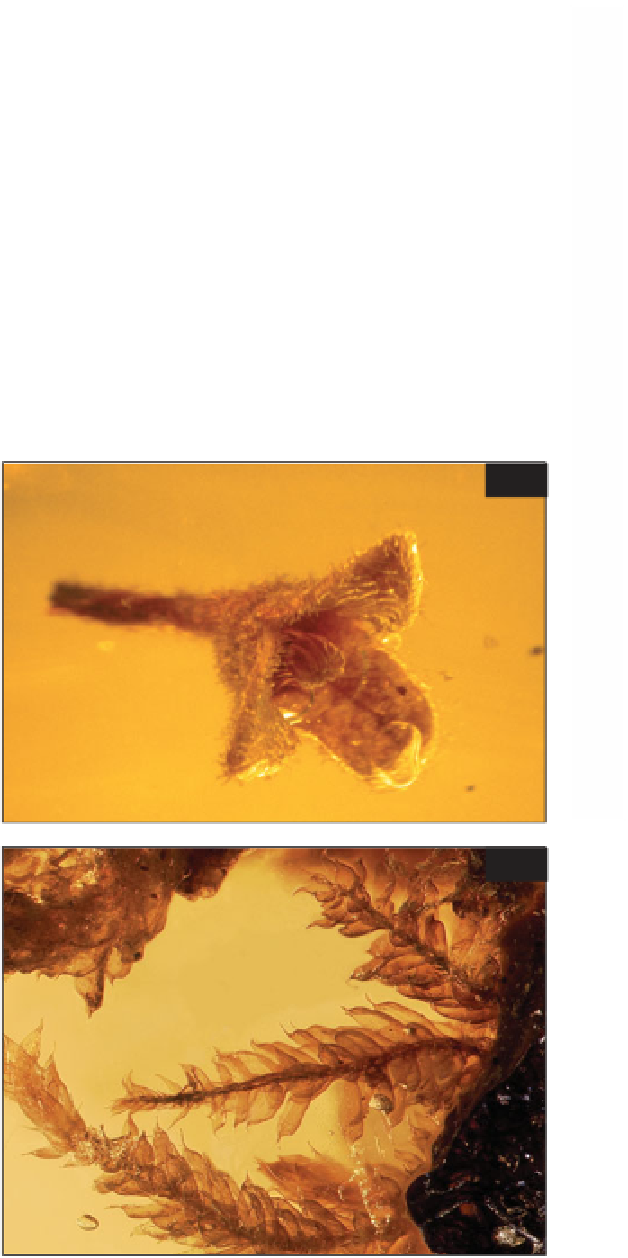Geoscience Reference
In-Depth Information
Prioria
(the cativo) and
Peltogyne
(the
nazareno). These trees also reached more
than 37 m (120 ft) in height, and together
with
Hymenaea
would have formed the
major canopy trees of the amber forest.
Flowers belonging to the families
Fabaceae, Meliaceae, Myristicaceae
(
254
), Thymelaceae, Bombacaceae, and
Hippocrateaceae have all been found
in Dominican amber (Poinar, 1992). These
trees would have formed mostly
understorey trees in the forest, although
Hippocrateaceae are lianas. Tall bamboos
and palms were also present. It is not always
the actual fossils of plants which give
evidence to their presence. Fossils of fig-
wasps (Hymenoptera: Agaonidae) show that
fig trees (
Ficus
) must have been present
because these wasps need figs for their life
cycle just as fig species need their
specific species of wasp for pollination. The
palm bug
Paleodoris lattini
(Hemiptera:
Thaumastocoridae) provides evidence for
the presence of palms on which it lives
(Poinar and Santiago-Blay, 1997).
As in all tropical forests today,
epiphytes - plants which live on the
trunks and branches of other plants -
were abundant in the amber forest.
Bromeliads and orchids are likely to have
been common, as well as ferns,
bryophytes (mosses and liverworts),
lichens, algae, and fungi. Being bark
dwellers, mosses (
255
) and liverworts are
254
254 Male flower of the ucu
ba
Virola: Myristicaceae PC.
Length about 2 mm 0.08 in.
255
255 Leaves of a moss PC.
Picture about 15 mm 0.6 in
wide.



Search WWH ::

Custom Search